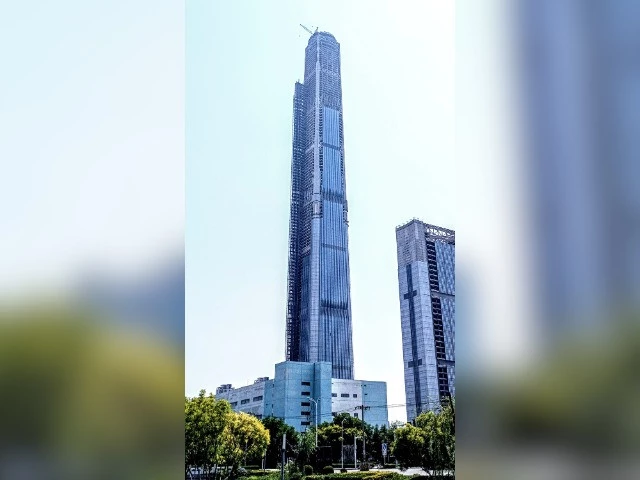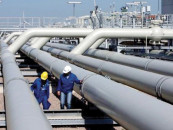World’s tallest abandoned skyscraper in China set to resume construction after 10 years
The stalled tower’s revival reflects broader shifts in China’s troubled property sector

Construction on the world’s tallest unoccupied skyscraper, the Goldin Finance 117 tower in Tianjin, could restart as early as next week, nearly 10 years after the project was abandoned, Chinese state media reported.
The 597-metre (1,959-foot) Goldin Finance 117-storey skyscraper has remained unfinished since 2015 following the collapse of Chinese stock market.
The project’s return comes amid broader efforts to revive unfinished developments across China, where dozens of towering but abandoned buildings symbolise the nation’s troubled real estate market.
Originally intended to house office space and a luxury hotel, the building features “mega columns” for structural safety and a distinctive diamond-topped atrium that was designed to include a swimming pool and observation deck.
Plans for the tower’s usage remain unclear, but state media report that a new construction permit has been issued with a contract value of nearly 569 million yuan ($78 million).
The permit lists state-owned BGI Engineering Consultants as a contractor, while references to the original developer appear to have been dropped.
In 2020, China banned new buildings over 500 metres, in an attempt to rein in risky, debt-fuelled projects and speculative development. If completed, the Tianjin tower would defy that restriction due to its early construction date.
Neither P&T Group, the tower’s original architects, nor BGI responded to requests for comment.
On Monday, local state media reported that China’s Greenland Group will resume construction on the long-delayed Chengdu Greenland Tower, a 468-metre (1,535-foot) skyscraper in the southwestern city of Chengdu.
The project had been suspended since 2023 due to financial troubles faced by the state-owned developer.
The simultaneous revival of two major high-rise projects suggests a coordinated effort, said Qiao Shitong, a law professor at Duke University and author of two books on China’s property sector.
“The central government has made it clear that stabilising the real estate market is a priority,” Qiao said via video call, noting that local authorities are being pushed to support the sector’s recovery. “This is about more than the buildings — it’s a message to the market.”
Although financing details for the Tianjin skyscraper remain undisclosed, law professor Qiao Shitong believes state-led investment and debt restructuring are likely behind the project’s revival.
“Supertall towers may not be the most efficient or profitable developments, but they serve as signals,” said Qiao. “Bringing this project to completion is a move by the government to boost public confidence.”
Urban image is also a driving force, said Fei Chen, an architecture and urban design expert at the University of Liverpool. “An unfinished skyscraper is a visual blight — cities don’t want these half-built eyesores,” she said.
However, Chen cautioned that the renewed construction efforts in Tianjin and Chengdu do not mark a return to the era of so-called vanity projects.
“Despite some local benefits, these towers demand heavy investment and are neither financially nor environmentally sustainable,” she added. “What we’re seeing is not a national trend shift, but rather targeted efforts by local governments to improve their cities.”
Despite economic headwinds and tighter regulations, China remains the global leader in skyscraper construction.
Of the 133 skyscrapers over 200 metres completed worldwide in 2023, 91 were built in China, according to the Council on Tall Buildings and Urban Habitat.
Architect Fei Chen said that while skyscrapers are costly, they are often deployed as “investment magnets” to stimulate surrounding development.
Goldin Finance 117 was originally part of a broader masterplan that included villas, commercial spaces, offices, a convention centre, an entertainment hub, and even a polo club.
The new construction permit does not detail the future of these associated projects, though it reportedly mentions plans for multiple “commercial corridors.”
Despite the ongoing development, the economic feasibility of the Tianjin tower remains uncertain amid sluggish property sales and weak office occupancy rates across China, said Qiao. “It’s a massive investment,” he remarked, adding, “I honestly don’t know who will buy or lease the commercial space.”
During the tower’s decade-long delay, Tianjin saw the completion of another supertall structure — the Tianjin CTF Finance Centre, standing at 530 metres (1,739 feet), making it the world’s eighth tallest building.
Goldin Finance 117, meanwhile, has been overtaken in height by the Shanghai Tower and the Ping An Finance Centre in Shenzhen.
As a result, the Tianjin tower would now rank as China’s third tallest and the world’s sixth tallest once finished.























COMMENTS
Comments are moderated and generally will be posted if they are on-topic and not abusive.
For more information, please see our Comments FAQ